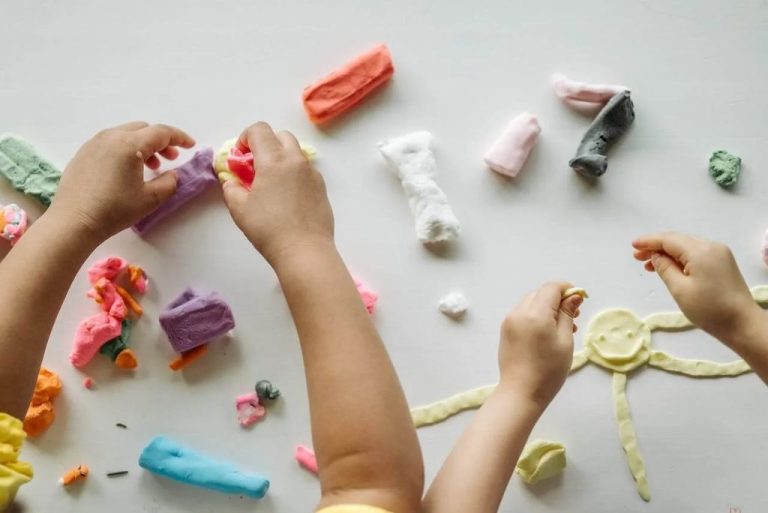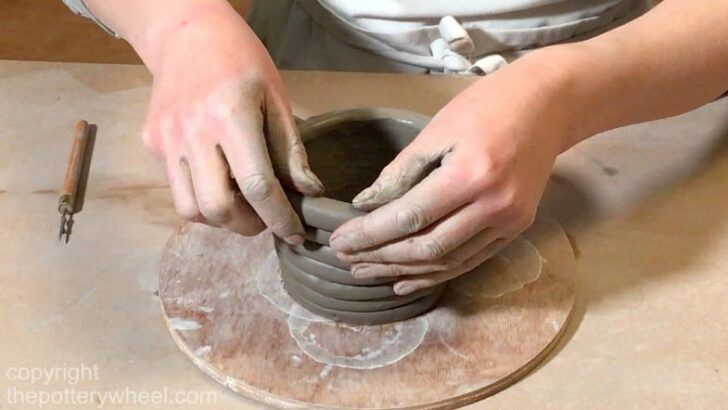How Do You Secure A 5 Gallon Bucket Lid?
Securing the lid on a 5 gallon bucket is important for several reasons. Properly sealing the lid helps protect the contents from spills, contamination, pests, and unauthorized access. It also ensures portability so you can transport the bucket without worrying about the lid coming loose. There are many methods for securely fastening a 5 gallon bucket lid, including using rubber mallets, ratchet straps, adhesives, gaskets, weights, and bungee cords. This article will provide an overview of these key techniques for properly sealing a 5 gallon bucket.
Assess the Lid and Bucket
Before securing the lid, carefully inspect both the bucket and lid for any cracks or damage that could prevent a tight seal. Gently press on the sides and bottom of the bucket to check for cracks or weak spots. Inspect the rim of the bucket opening as well as the sealing surface on the underside of the lid for nicks, warped plastic, or other imperfections. Make sure no debris is stuck to the sealing surfaces. Clean with mild soap and water if needed.
Test fit the lid on the bucket. It should fit snugly without requiring force. If the lid is loose, try rotating it to find the best orientation for a tight fit. Some deformation can happen over time, preventing a perfect seal. If the lid is very loose or does not fully contact the rim, securing it will be difficult.
Clean the Sealing Surfaces
Before securing the lid, it’s important to thoroughly clean the sealing surfaces on both the lid and bucket. This removes any debris, residue, or dirt that could prevent an airtight seal.
Use a mild detergent or soap and warm water to wash the lid and top rim of the bucket. Scrub any visible dirt or grime deposits. Rinse both surfaces well to remove all soap residue. Be sure to also clean the underside of the lid, where the seal sits.
Allow the lid and bucket rim to completely air dry before attempting to seal them. Any lingering moisture can impact the effectiveness of the seal. Wipe both surfaces with a clean, dry towel to fully dry them.1
Proper cleaning provides the best sealing surface and helps ensure a tight, secured lid.
Use a Rubber Mallet
Using a rubber mallet is an effective way to secure a 5 gallon bucket lid and create an airtight seal. Start by placing the bucket on a solid, flat surface. Then take a rubber mallet and gently tap around the lid, working your way around the entire circumference.
Be careful not to hit the bucket too hard or dent it. The goal is to apply just enough focused force to push the lid evenly into place. The soft rubber head on the mallet allows you to tap firmly but gently. Adjust your force so you are not damaging the bucket.
The tapping motion helps seat the lid and compresses the seal, closing any small gaps. This should create a tight, airtight fit between the lid and bucket. Test the seal by trying to remove the lid without undoing the latches – it should remain securely in place if properly sealed.
Rubber mallets can be purchased at most hardware stores and home centers if you do not already have one. Select a 2-3 pound mallet for plastic buckets. With this simple tool and technique, you can achieve a reliable lid seal.
Try a Ratchet Strap
Ratchet straps can provide a tight fit for securing 5 gallon bucket lids. Position the ratchet strap around the circumference of the lid, looping it underneath the lip. Tighten the ratchet strap by cranking the handle, which will cinch the strap tighter. Be careful not to over-tighten the strap, as this could warp or crack the lid. Just make it snug enough to keep the lid tight to the top of the bucket. The tight grip of a ratchet strap can create an effective seal and deter any leakage (Mountain Buzz, 2021). While ratchet straps tend to be very secure, they can be difficult to remove once tightened down fully. Start with moderate tightness and adjust as needed for your particular use case.
Use Adhesives
One option for securing a 5 gallon bucket lid is to apply an adhesive or sealant around the rim where the lid meets the bucket. Make sure to use a product that will bond plastic to plastic, such as epoxy or silicone adhesive. According to this forum discussion, standard glues won’t properly adhere to plastic buckets.
Apply a continuous bead of adhesive around the top lip of the bucket or the mating surface of the lid. Press the lid firmly into place to seal it, then allow the adhesive to fully cure according to the product instructions, which may take 24 hours or longer. The adhesive creates a watertight seal between the lid and bucket.
For food storage or drinking water, be sure to choose an adhesive approved for potable water contact, such as 100% silicone. Other types of adhesives may leach chemicals. Let any fumes dissipate fully before using the sealed bucket.
Consider a Gasket
One effective way to secure a 5 gallon bucket lid is to install a foam or rubber gasket between the lid and bucket. Gaskets provide a cushion and a tight seal to keep the lid securely in place. According to Bucket Lid Gasket O-Ring Fits 3.5, 5, 6, and 7 Gallon Buckets – Replaces Old, Worn Out Rubber Gaskets, Seals 5 Gallon Bucket Lids, replacement gaskets are available to fit standard 5 gallon bucket lids.
The gasket sits between the lip of the bucket and the lid, creating a tight friction seal. Over time, the gasket can become worn out. It’s important to periodically inspect the gasket and replace it if degradation occurs, according to Gasket Lid For 3 Gal. and 5 Gal. Pails – White. Replacing a worn out gasket with a new one will ensure the lid remains securely sealed to the bucket.
Gaskets provide a reliable way to seal 5 gallon bucket lids for storage or transport. Just make sure to periodically check the gasket for wear and replace when needed.
Weigh Down the Lid
One simple solution for securing a 5 gallon bucket lid is to weigh it down. This involves placing heavy objects on top of the lid to keep it compressed tightly against the bucket.
It’s important when weighing down a lid to distribute the weight evenly. Putting the load in just one spot could cause the lid to bend or dent. Spread the weight out over the entire surface of the lid.
Good objects to use are bricks, large rocks, buckets of water or sand, or anything else sturdy that has substantial weight. Avoid pointed or small objects that may concentrate pressure on a small area. The goal is to press down firmly but evenly across the whole lid.
For a 5 gallon bucket, often around 40-50 lbs of weight is sufficient to securely hold down the lid. This is enough to create a tight seal while avoiding denting the lid. If using items like bricks, aim for at least 4-5 lined up across the diameter of the lid.
Weighing down a bucket lid is a simple, effective method to keep it sealed tight. Just be sure to distribute the weight properly to avoid damaging the lid.
Sources:
https://tvwbb.com/threads/how-to-weigh-down-a-canopy.12139/
https://www.bbq-brethren.com/forum/archive/index.php/t-106540.html
Secure With Bungee Cords
One effective method to secure a 5 gallon bucket lid is to wrap bungee cords around the bucket. According to The Perfect Bungee, bungee cords are an excellent way to fasten a 5 gallon bucket inside a vehicle.
To secure the lid with bungee cords:
- Wrap several bungee cords horizontally around the bucket, crisscrossing them over the top of the lid.
- Hook the ends of the cords together very tightly to apply downward pressure.
- Check the cords periodically to ensure they remain tightly hooked and secure.
The elasticity of bungee cords allows them to contract and tighten around the bucket. This constant inward pressure can help create an extremely tight seal between the lid and bucket.
Conclusion
To recap, the best and most effective methods for securing a 5 gallon bucket lid are to use a rubber mallet to seal it, apply adhesives around the rim, or weigh down the lid with something heavy. Make sure to check the seal periodically to ensure it hasn’t come loose. Remember, contents may be under pressure so open cautiously. Always practice safety and never store anything dangerous where children or pets can access it.




